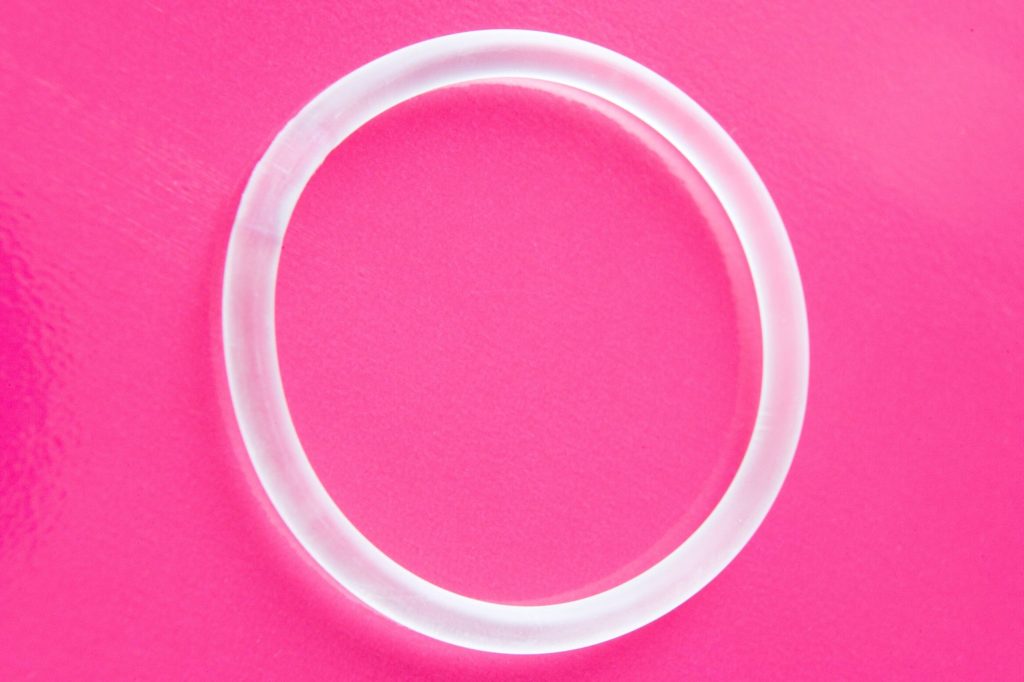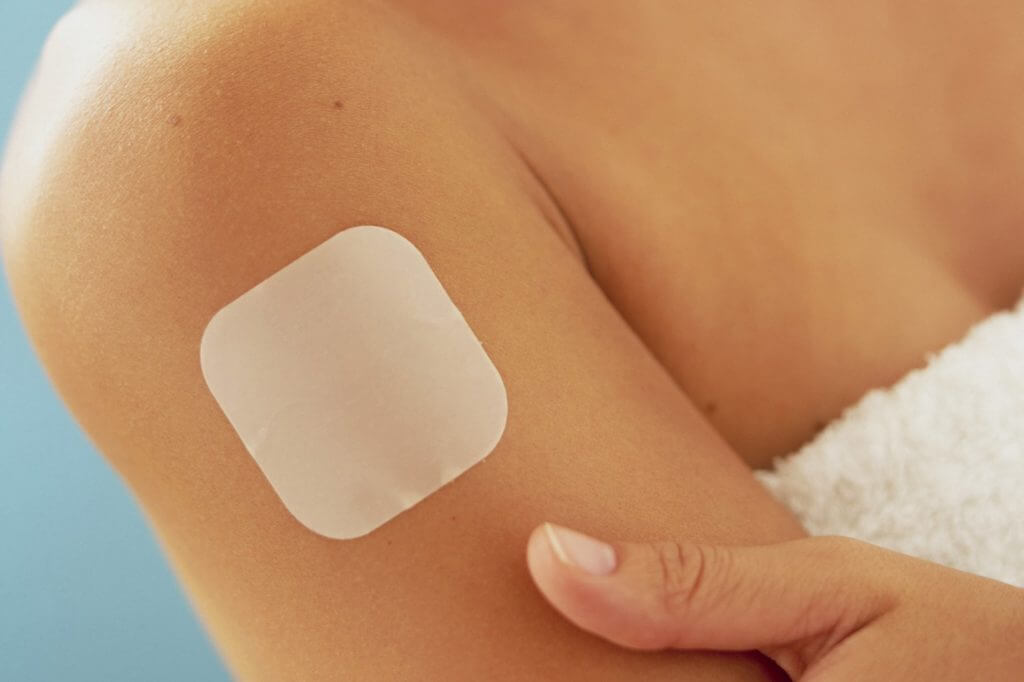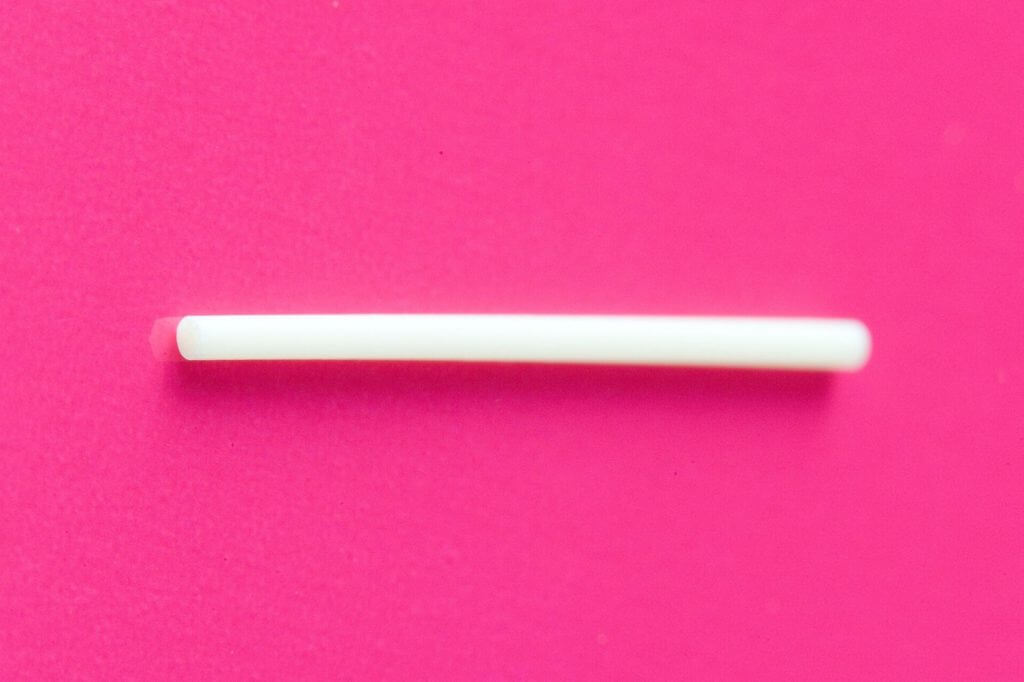Vaginal ring

At a glance: facts about the vaginal ring
- If used correctly, the vaginal ring is more than 99% effective.
- One ring provides contraception for a month, so you don’t have to think about it every day.
- You can continue to have sex when the ring is in place.
- Unlike the pill, the ring still works if you have sickness (vomiting) or diarrhoea.
- The ring may ease premenstrual symptoms, and bleeding will probably be lighter and less painful.
- Some women have temporary side effects, including more vaginal discharge, breast tenderness and headaches.
- A few women develop a blood clot when using the ring, but this is rare.
- The ring can sometimes come out on its own, but you can rinse it in warm water and put it back in as soon as possible.
- It doesn’t protect against sexually transmitted infections (STIs), so you may need to use condoms as well.
How the ring works
The ring steadily releases the hormones oestrogen and progestogen into your bloodstream, which prevents the release of an egg each month.
It also thickens the cervical mucus, which makes it more difficult for sperm to move through the cervix, and thins the lining of the womb so a fertilised egg is less likely to implant itself.
When it starts to work
You can start using the vaginal ring at any time during your menstrual cycle if you’re not pregnant.
You leave it in for 21 days, then remove it and have a 7-day ring-free break. You’re protected against pregnancy during the ring-free break. You then put a new ring in for another 21 days.
You’ll be protected against pregnancy straight away if you insert it on the first day of your period (the first day of your menstrual cycle).
If you start using the ring at any other time in your menstrual cycle, you’ll be protected against pregnancy as long as you use additional contraception (such as condoms) for the first 7 days of using it.
You can discuss this with your GP or nurse to decide when might be the best time for you to start using it and how to insert and remove it.
To insert the ring:
- with clean hands, squeeze the ring between your thumb and finger, and gently insert the tip into your vagina
- gently push the ring up into your vagina until it feels comfortable
Unlike a diaphragm or cap, the ring doesn’t need to cover the entrance to your womb (the cervix) to work.
You should be able to check that the ring is still there using your fingers. If you can’t feel it but you’re sure it’s there, see a GP or nurse. The ring can’t get “lost” inside you.
After the ring has been in your vagina for 21 days (3 weeks), you remove it. This should be on the same day of the week that you put it in.
To remove the ring:
- with clean hands, put a finger into your vagina and hook it around the edge of the ring
- gently pull the ring out
- put it in the special bag provided and throw it in the bin – don’t flush it down the toilet
Removing the ring should be painless. If you have any bleeding or pain or you can’t pull it out, see your GP or nurse immediately.
When you’ve taken the ring out, you don’t put a new one in for 7 days (1 week). This is the ring-free interval. You might have a period-type bleed during this time.
After 7 days without a ring in, insert a new one. Put the new ring in even if you’re still bleeding. Leave this ring in for 21 days, then repeat the cycle.
You can have sex and use tampons while the ring is in your vagina. You and your partner may feel the ring during sex, but this isn’t harmful.
If you forget to take the ring out after 21 days
If the ring has been in for up to 7 days after the end of week 3 (up to 4 weeks in total):
- take the ring out as soon as you remember
- don’t put a new ring in – start your 7-day interval as normal
- begin your new ring after your 7-day interval
- you’re still protected against pregnancy, and you don’t need to use additional contraception
If the ring has been in for more than 7 days after the end of week 3 (more than 4 weeks in total):
- take the ring out as soon as you remember
- put a new ring in straight away
- use additional contraception, such as condoms, for 7 days
- you may need emergency contraception if you’ve had sex in the days before changing the rings over – see a GP or nurse for advice
If you forget to put a new ring in
Put in a new ring as soon as you remember, and use additional contraception (such as condoms) for 7 days.
You may need emergency contraception if you had sex before you remembered to put the new ring in, and the ring-free interval was 48 hours longer than it should have been or more (9 days or more in total).
If the ring comes out by itself
Sometimes the ring may come out on its own (expulsion). It may happen after or during sex, or if it wasn’t put in properly.
What you should do depends on how long the ring is out for and which week in your cycle you’re on.
If the ring is out for less than 3 hours (regardless of where you are in your cycle):
- rinse it with cool or lukewarm water
- reinsert the same ring as soon as possible within 3 hours
- you don’t need additional contraception and you’re protected from pregnancy
If the ring is out for more than 3 hours in the first or second week:
- rinse it with cool or lukewarm water
- reinsert the same ring as soon as possible
- use additional contraception for 7 days
- you may need emergency contraception if you’ve had sex in the last few days
If the ring is out for more than 3 hours in the third week, throw it away and choose one of two options:
- put a new ring in straight away – you may not have a period-type bleed, but you may have spotting
- don’t put a ring in and start your 7-day interval – you’ll have a period-type bleed
If you choose not to put a ring in, you should put a new ring in 7 days after the previous one came out. You can only choose this option if the ring was in continuously for the previous 7 days.
Whichever option you choose, use additional contraception for 7 days and see a GP or nurse if you’ve had sex in the last few days, as you may need emergency contraception.
Who can use the vaginal ring?
Some women can’t use the vaginal ring.
It may not be suitable if you:
- have had a blood clot in a vein or artery
- have had heart or circulatory problems, including high blood pressure
- are 35 or older and smoke, or stopped smoking in the past year
- have migraine with aura (warning symptoms)
- have had breast cancer in the past 5 years
- have diabetes with complications
- are overweight
- take medicines that make interact with the ring
- can’t hold the ring in your vagina
If you don’t smoke and there are no medical reasons why you can’t use the ring, you can use it until you’re 50 years old.
After giving birth
You can start using the vaginal ring 21 days after giving birth, and you’ll be protected against pregnancy straight away.
If you start the ring more than 21 days after giving birth, you need to use additional contraception (such as condoms) for 7 days after you insert the ring.
If you’re breastfeeding a baby under 6 months old, you should use a different method of contraception. This is because the vaginal ring can sometimes reduce your flow of milk.
After miscarriage or abortion
You can start using the ring immediately after a miscarriage or abortion, and it’ll work straight away. You don’t need to use additional contraception.
Advantages and disadvantages
Advantages:
- it doesn’t interrupt sex
- it’s easy to put in and take out
- you don’t have to think about it every day or each time you have sex
- the ring isn’t affected if you’re sick (vomit) or have diarrhoea
- it may help with premenstrual symptoms
- period-type bleeding usually becomes lighter, more regular and less painful
- it can have additional health benefits, such as reducing the risk of some cancers
- it has no long-term effect on your fertility
Disadvantages:
- you may not feel comfortable inserting or removing it from your vagina
- you can have spotting and bleeding in the first few months
- it may cause temporary side effects, such as increased vaginal discharge, headaches, nausea, breast tenderness and mood changes
- the ring doesn’t protect against STIs
- you need to remember to change it and put in a new one – if remembering to do this is difficult, a longer-acting method such as the contraceptive implant or intrauterine device (IUD) may be more suitable
- some medicines can make the ring less effective – see a GP, nurse or pharmacist for advice
Risks
There’s a very small risk of some serious side effects when you use a hormonal contraceptive like the vaginal ring.
For most women, the benefits of the ring outweigh the possible risks, but you should discuss all risk and benefits with a GP or nurse before you start it.
Blood clots
A very small number of people using the vaginal ring may develop a blood clot in a vein or an artery. Don’t use the ring if you’ve had a blood clot before.
Cancer
Research suggests that people who use the vaginal ring have a small increased risk of being diagnosed with breast cancer compared with those who don’t. But this reduces with time after you’ve stopped using the ring.
Research also suggests there’s a small increase in the risk of developing cervical cancer with long-term use of oestrogen and progestogen hormonal contraception.
Where you can get the vaginal ring
You can get contraception for free, even if you’re under 16, from:
- contraception clinics
- sexual health or genitourinary medicine (GUM) clinics
- some GP surgeries
- some young people’s services
But not all clinics are able to provide the vaginal ring, so it’s worth checking first.
You won’t be able to get a prescription for more than 4 months’ supply at a time because this is its shelf life.
The only time a professional might want to tell someone else is if they believe you’re at risk of harm, such as abuse.
The risk would need to be serious, and they would usually discuss this with you first.





